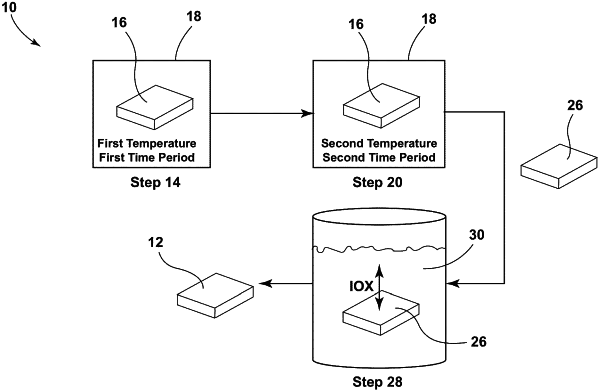| CPC C03C 10/0027 (2013.01) [C03C 4/02 (2013.01); C03C 10/0036 (2013.01); C03C 21/002 (2013.01); C03C 21/005 (2013.01)] | 20 Claims |

|
1. A method of manufacturing a glass-ceramic article comprising:
(a) maintaining a precursor glass in an environment for a first time period of 1.75 to 4.25 hours while the environment has a first temperature of 590° C. to 820° C., the precursor glass having a composition comprising, on an oxide basis:
55-75 mol % SiO2;
0.2-10 mol % Al2O3;
0-5 mol % B2O3;
15-30 mol % Li2O;
0-2 mol % Na2O;
0-2 mol % K2O;
0-5 mol % MgO;
0-2 mol % ZnO;
0.2-3.0 mol % P2O5;
0.1-10 mol % ZrO2;
0-4 mol % TiO2; and
0-1.0 mol % SnO2;
(b) maintaining the precursor glass in the environment for a second time period of 0.75 hour to 4.25 hours while the environment has a second temperature of 850° C. to 925° C., forming a glass-ceramic substrate, wherein (i) lithium disilicate and (ii) either β-spodumene or β-quartz are the two predominant crystalline phases by weight percentage of the glass-ceramic substrate, and wherein tetragonal ZrO2 is a crystalline phase of the glass-ceramic substrate; and
(c) subjecting the glass-ceramic substrate to an ion-exchange treatment in a molten salt bath that comprises a salt of one or more of ionic Na, K, and Ag, forming a glass-ceramic article.
|